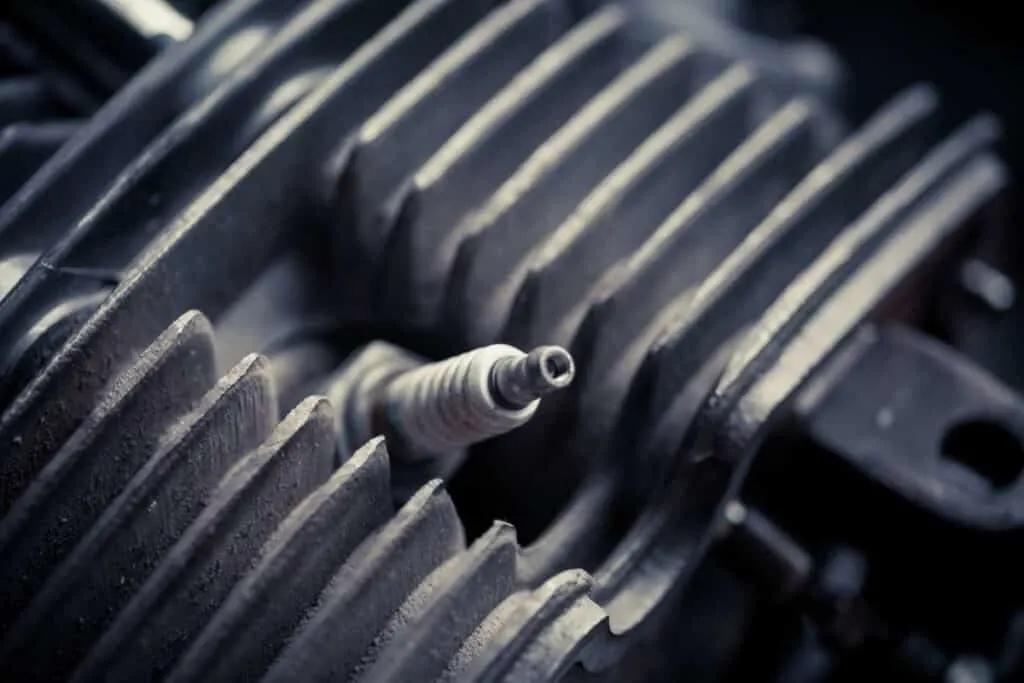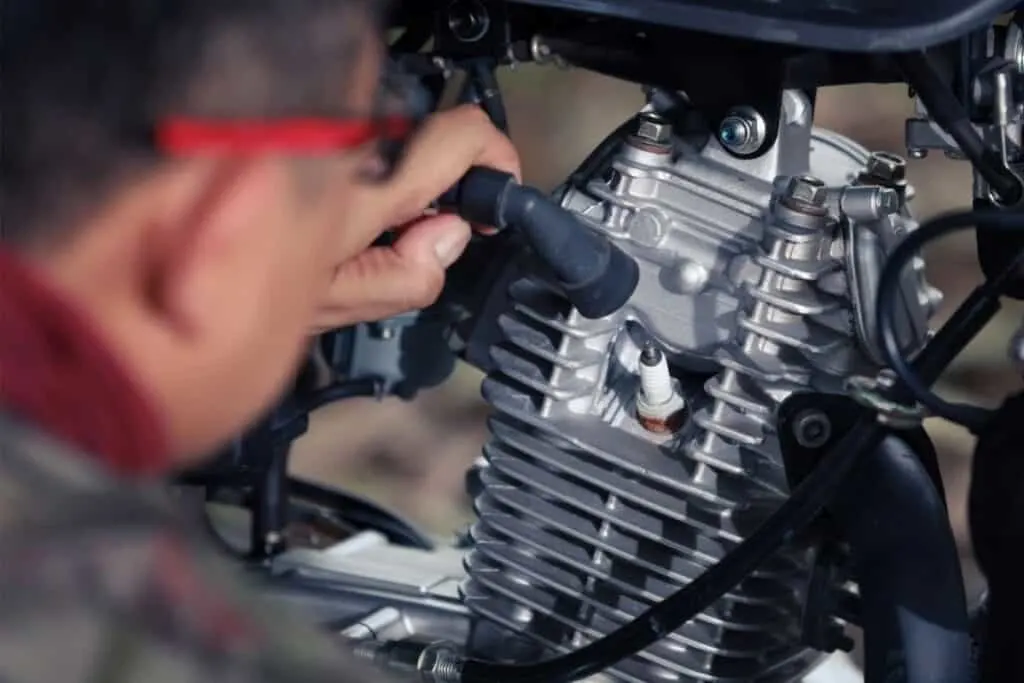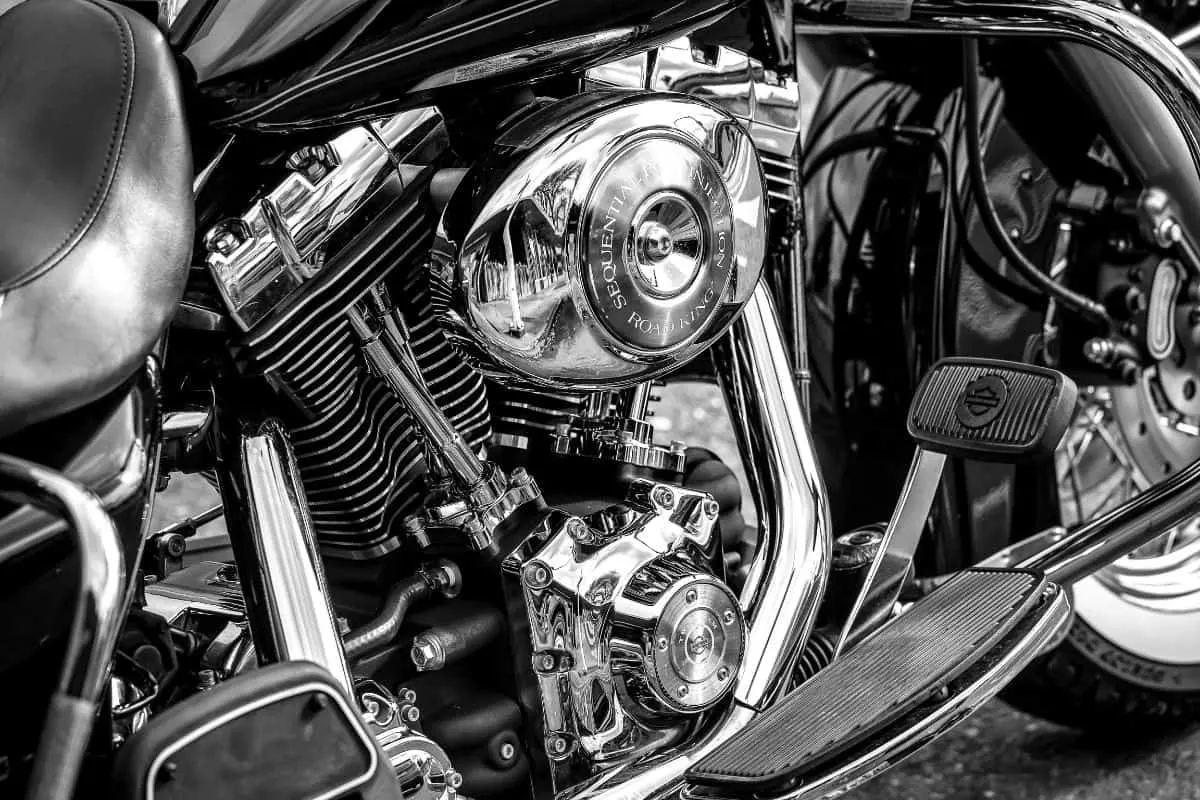Spark plugs are critical to the combustion of gas that powers a motorcycle engine. If you’re experiencing engine problems and want to replace your spark plugs, you may find yourself wondering just how many your motorcycle engine has.
Motorcycles commonly have between 4-6 spark plugs, but may have as few as 2. The exact number of spark plugs on a motorcycle will depend on the manufacturer’s specifications and the number of cylinders on the engine.
Spark plugs in a motorcycle are an essential part of the engine. If you want to keep your bike sparking, make sure it has a good set of spark plugs. Here’s what you need to know about spark plugs in motorcycles.
Do Motorcycles Have Spark Plugs?
Yes. Motorcycles have spark plugs, which help ignite the fuel in the cylinder when the piston compresses it to a near-vacuum and opens for the fuel to be ignited in a controlled manner to drive the engine.
While a copper core is a standard feature of a spark plug, the most common type of plug is a nickel-alloy outer material fused to the copper core electrodes. Copper spark plugs rely on a solid-copper core, which provides cooler operation and more consistent performance.
Motorcycle spark plugs are small because the engines are more compact than those of cars. These spark plugs also have varied heat ratings, which means that they are cooler.

How Many Spark Plugs Are In Motorcycles?
There are usually 1 to 6 spark plugs in a motorcycle, depending on its engine type.
If you have a four-stroke engine, it’s most likely that you will have 4 or 6 spark plugs for your motorcycle.
The number of spark plugs, along with the number of cylinders, determines the torque output of a motor. The more cylinders a motorcycle has, the greater the power output!
How Often Should You Change Your Motorcycle Spark Plugs?
There are several reasons why you might need to change out your motorcycle’s spark plugs, including if they are fouled, worn, or aged. The spark plugs are often replaced after every 8000 miles to 10,000 miles.
Ignition systems have greatly improved, and so modern motorcycles can go up to 15,000 to 16,000 miles before the spark plugs can be newly replaced.
Before replacing the spark plugs, we need to regularly check them to identify any visible wear and tear. It’s advisable to inspect our motorcycle spark plugs every 4000 to 5000 miles that we cover.

Where Are Spark Plugs Located On A Motorcycle?
The motorcycle spark plugs screw into the top of the cylinder and project into the igniting chamber.
Located at the bottom of the foot of the spark plug is the side electrode. It is sometimes called the ground electrode.
In some motorcycle models, plastic covers encase the spark plugs, and they might be slightly hidden by the gas tank or even fairing components.
Types of Motorcycle Spark Plugs
All motorcycle spark plugs are not the same. Gap configurations vary between each spark plug type.
Copper based
Copper-tipped spark plugs are a common and standard form of spark plug.
Copper is one of the best conductors of electricity, so these plugs do not overheat quickly. This prolongs the life of the spark plug and can last thousands of miles without eroding naturally.
Single Platinum based
Single platinum plugs are more expensive than copper despite being less conductive than the latter.
As a result, they tend to last longer since the metal does not erode or wear out as easily as copper. Their ability to hold up well against abuse is their main strength.
Double Platinum based
Double Platinum Spark Plugs have two plates of platinum on the tip. This allows them to last longer and perform better than single-platinum versions.
However, they’re more expensive and still experience overheating issues.
Iridium
Iridium is a rare metal, but it is very resistant to corrosion, and more expensive.
The unique properties of iridium make it a great choice for spark plugs in an engine since they can outlast the copper-wire models.
Iridium spark plugs may require servicing after 40,000 to 80,000 miles, depending on which manufacturer you use.
Signs That Your Motorcycle Spark Plugs Are Bad
1. Increased misfiring episodes
When the engine misfires, we can notice immediately because it goes off rhythm. This occurs when the spark plugs do not provide arc at the peak on time.
2. When the motorcycle backfires
Time and again a misfiring can let out a loud pop from the exhaust. When the spark plugs have an intermittent spark, it results in the bike backfiring.
3. Flooded engine
A flooded engine occurs when the engine cranks over and over without really igniting.
When this happens, we can smell gas from the combustion chamber as it is not combusted.
4. The visibly bad condition of the spark plugs
Damaged spark plugs show visible burn marks, broken or bent knobs. There are times that spark plugs will have rust or corrosion.
Why It Is Crucial To Replace Motorcycle Spark Plugs
- Enhances performance. Spark plugs of iridium promote better combustion, reduce emissions, improve fuel economy, and add horsepower.
- Improve fuel economy. New spark plugs allow the engine to function smoothly and need little effort to maintain the combustion process. This increases the fuel economy.
- Reduce exhaust emissions. Motorcycle spark plugs reduce the likelihood of misfires that could happen, therefore maximizing fuel efficiency.
- Enhances acceleration and engine reaction. Spark plugs that are in good condition strengthen the process of combustion. Each time we replace the spark plugs, the engine runs more smoothly, and the acceleration improves.
Reliable spark plugs are a critical part of a combustion engine and will determine how far your bike can go as well as how quickly it can get there!
